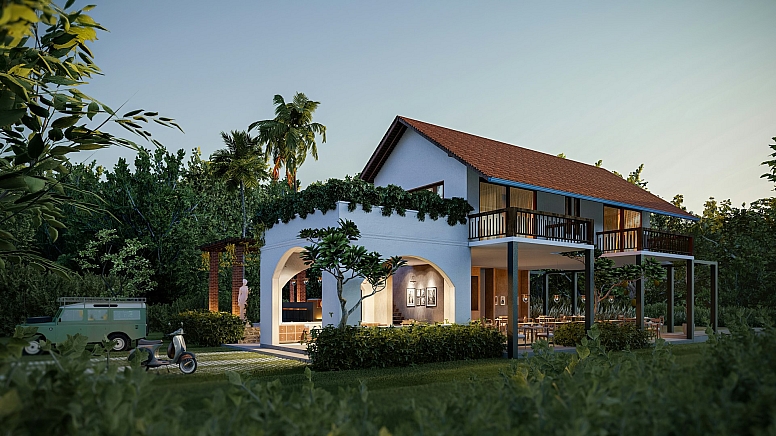
Sustainable Architecture: A Key Focus in Business Trends
The Rise of Sustainable Architecture
This year, sustainable architecture is no longer an optional consideration but a necessity. The integration of environmentally responsible design principles is shaping the future of businesses worldwide. Organizations are increasingly aligning their infrastructures with sustainability goals to reduce carbon footprints, optimize energy efficiency, and meet regulatory demands.
What is Sustainable Architecture?
Sustainable architecture encompasses designing and constructing buildings that minimize environmental impact while promoting energy efficiency and resource conservation. This approach considers the entire lifecycle of a structure, from material sourcing to eventual deconstruction, ensuring minimal ecological harm.
Core Principles of Sustainable Architecture
- Energy Efficiency: Incorporating renewable energy sources like solar panels, wind turbines, and geothermal heating systems.
- Material Sustainability: Using eco-friendly, recycled, and locally sourced materials.
- Water Management: Implementing systems for rainwater harvesting and greywater recycling.
- Waste Reduction: Designing structures to minimize construction and operational waste.
- Indoor Environmental Quality: Enhancing indoor air quality with non-toxic materials and natural ventilation.
The Business Case for Sustainable Architecture

1. Cost Savings Through Energy Efficiency
Sustainable architecture reduces operational costs significantly by incorporating energy-efficient designs. Smart building technologies, such as automated lighting systems and energy monitoring tools, optimize energy consumption and lower utility bills.
2. Regulatory Compliance and Incentives
Governments globally are mandating sustainability standards for businesses. Companies adopting sustainable architecture benefit from tax incentives, grants, and certifications like LEED (Leadership in Energy and Environmental Design).
3. Enhanced Brand Reputation
Customers increasingly prefer businesses that prioritize sustainability. Adopting green building practices not only boosts a company's reputation but also fosters trust and loyalty among eco-conscious stakeholders.
4. Future-Proofing Investments
With possible risks to traditional infrastructure, sustainable buildings are better equipped to withstand environmental challenges, safeguarding long-term investments.
Key Trends in Sustainable Architecture This Year

1. Biophilic Design
Biophilic design emphasizes connecting occupants with nature through elements like green walls, rooftop gardens, and natural lighting. This approach not only improves mental well-being but also enhances productivity in workplaces.
2. Net-Zero Buildings
Net-zero buildings are designed to produce as much energy as they consume. This trend is gaining traction as businesses aim to achieve carbon neutrality by integrating renewable energy sources and energy-efficient technologies.
3. Circular Economy Practices
Incorporating circular economy principles into architecture involves reusing and recycling materials to create a closed-loop system. Modular construction methods are emerging as a popular way to reduce material waste.
4. Smart Building Technologies
IoT-enabled smart buildings are revolutionizing sustainability. Automated systems for lighting, HVAC, and energy management reduce resource usage while providing real-time insights into building performance.
5. Passive Design Strategies
Passive design optimizes a building’s orientation, insulation, and natural ventilation to maintain comfortable indoor temperatures without excessive energy consumption.
Innovative Materials in Sustainable Architecture

1. Cross-Laminated Timber (CLT)
CLT is a durable and sustainable alternative to concrete and steel. Its lightweight nature reduces transportation emissions, making it a preferred choice for eco-friendly construction.
2. Green Concrete
Green concrete incorporates recycled materials such as fly ash and slag, reducing the carbon footprint of traditional concrete.
3. Mycelium Insulation
Derived from fungi, mycelium-based insulation is biodegradable and highly effective in maintaining indoor temperatures.
4. Transparent Solar Panels
These panels double as windows, providing energy generation and natural lighting simultaneously, a game-changer for modern architectural designs.
How Businesses Can Implement Sustainable Architecture

Step 1: Conduct a Sustainability Audit
Begin by assessing your existing infrastructure’s energy consumption, waste production, and environmental impact. This evaluation forms the foundation for sustainable upgrades.
Step 2: Collaborate with Experts
Engage architects and engineers specializing in sustainable design. Their expertise ensures compliance with industry standards and optimal resource utilization.
Step 3: Invest in Renewable Energy
Incorporating solar panels, wind turbines, or geothermal systems can significantly reduce dependency on non-renewable resources.
Step 4: Optimize Water and Waste Management
Install systems for water recycling and rainwater harvesting. Additionally, implement waste segregation and recycling programs to minimize landfill contributions.
Step 5: Prioritize Employee Training
Educating employees about sustainable practices using resources like a free video editor to create engaging training materials fosters a culture of environmental responsibility, ensuring the longevity of green initiatives.
The Role of Technology in Sustainable Architecture

Emerging technologies play a pivotal role in advancing sustainable architecture. From 3D printing for reduced construction waste to AI-driven energy management systems, innovation is streamlining the transition toward greener buildings.
AI and Big Data Analytics
AI-powered systems analyze energy consumption patterns and suggest improvements, while big data enables predictive maintenance, extending the lifespan of infrastructure.
Blockchain for Transparency
Blockchain ensures transparency in material sourcing and supply chains, enabling businesses to verify the sustainability credentials of their projects.
Virtual Reality (VR) and Building Information Modelling (BIM)
VR and BIM facilitate efficient planning and visualization of sustainable designs, reducing errors and resource wastage during construction.
The Future of Sustainable Architecture in Business
Sustainable architecture is more than a trend; it is a strategic imperative for businesses this year. By embracing environmentally responsible design, organizations not only contribute to global sustainability goals but also reap financial, operational, and reputational benefits.
The integration of innovative technologies and materials further propels the adoption of sustainable practices, ensuring a resilient and prosperous future for businesses worldwide.










